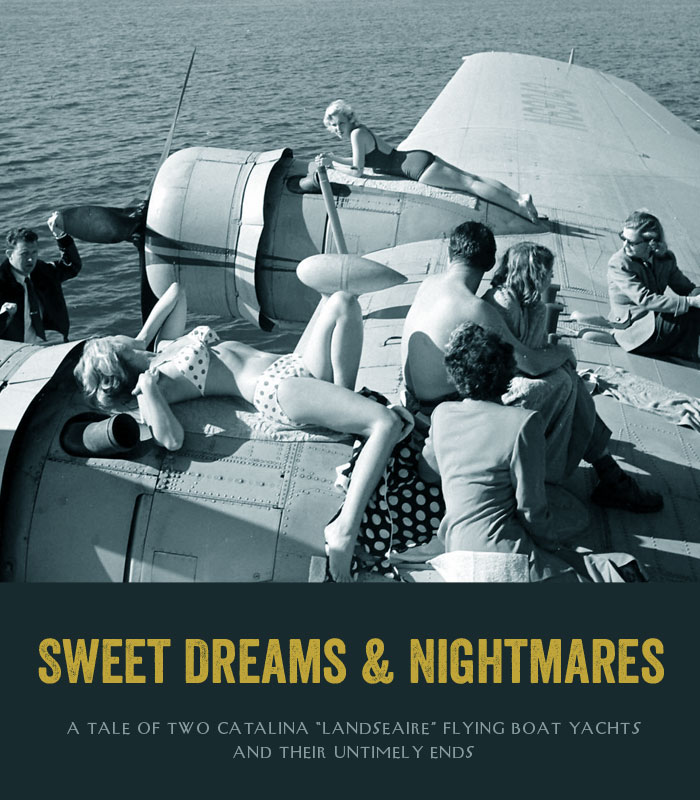By Dave O’Malley
Over the years, I periodically and repeatedly came across two entirely different series of photographs, taken 45 years apart. The first group was taken in 1950 by famed LIFE magazine photographer Loomis Dean. These images, purporting to be of a wealthy man cavorting with family and a couple of beautiful women off the California coast on a luxury PBY Catalina, were in fact a staged event put on by the company that refitted the old US Navy amphibian. Today we would call this an advertorial. The black and white photographs are particularly compelling because of two young blonde Hollywood starlets juxtaposed with the big aircraft and the older executive types who hosted them. The second group was taken in 1995 by expatriate Ken Stanford, an amateur photographer who, while working in Saudi Arabia, photographed a crumbling, bullet ridden wreck of a PBY Catalina rotting on a beach in Arabia where the Gulf of Aqaba opens into the Red Sea. These images came with a strange story of a family outing, Bedouin militiamen, international intrigue and a dream riddled by bullets.
The Catalinas in both instances were postwar conversions to a luxury flying yacht known as the Landseaire. One demonstrated the dreamlike glamour and recreational possibility of the flying yacht, while the other was a forlorn remnant, telling a story of one of those dreams wrecking on the shores of a hostile country. I kept those images in separate folders for a couple of years, and recently it occurred to me that they were related, and worthy of a story together.
The Consolidated PBY, in both its Catalina and Canso iterations, was one of the most versatile aircraft of the Second World War. The American-designed flying boat was first developed as a patrol bomber for the defence of American coastlines and the far-flung island archipelagos of the Pacific Ocean. It was utilized as a reconnaissance platform, bomber, submarine killer, liaison transport and as an Air Sea Rescue aircraft, plucking downed aviators from the despair of a ditching. The big twin-engined aircraft was first designed as a pure flying boat, capable of operating solely from water. A later development, the PBY-5A added an amphibious capability with retractable undercarriage and one of the most versatile aircraft in history was born.
The PBY was called the “Catalina” by the British first and the “Canso” by Canadians who built them in two plants in Canada. Total production at the close of the PBY assembly lines included 2,160 aircraft from San Diego, 235 from New Orleans, 731 from Canada (Cansos, and other variants for the USAAC and other Commonewealth air forces) and 155 from another plant in Philadelphia for a total of 3,281. The USSR built a small number under licence as well. With such a capable aircraft available in such numbers, it was only a matter of time before the low-time surplus examples found their way into civilian hands, including some with Southern California Aircraft Corp., a partner with Consolidated’s new corporate identity as Convair.Read More

